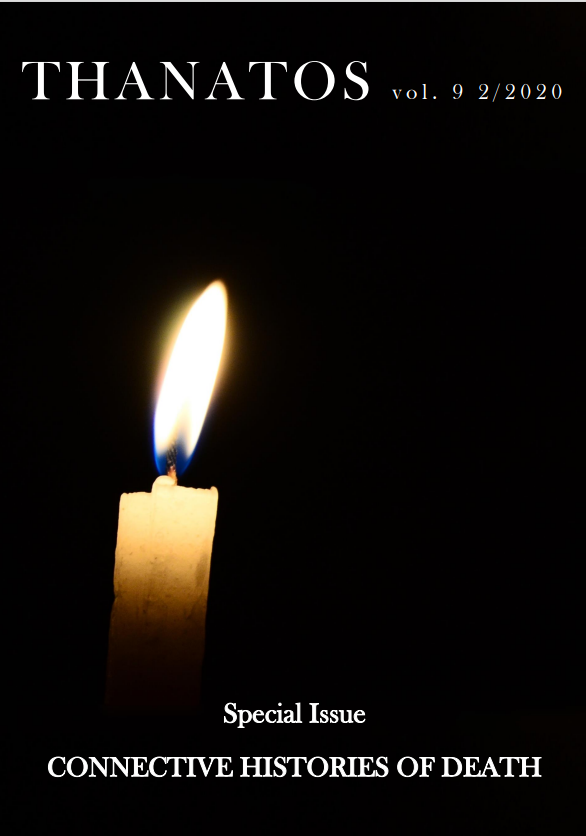Vol 9 Nro 2 (2020): Connective Histories of Death

The theme of the second issue of Thanatos in 2020 is connective histories of death. As the editors of this special issue, Samira Saramo and Marta-Laura Cenedese, explain in their introduction, these articles evolved from presentations at the “Histories of Death” International Symposium held at the University of Turku in February 2020. Instead of being a collection of comparative history, this special issue is about connective histories, looking at what types of connections, overlaps, and disparities may arise when historical studies of death across places and centuries are brought together.
In the first article Povilas Dikavičius studies funeral processions in 17th century Vilnius, Lithuania and demonstrates how deathscapes play integral roles in the negotiation of community, belonging, and the making of the polis.
Arnar Árnason and Sigurjón Baldur Hafsteinsson’s article studies how the specific and local geographical site of the “late” Icelandic glacier Ok expanded to become a multi-sited deathscape of global significance, reading its story through the lens of “ecological grief,” or the emotional response to the destruction caused by climate change.
In the third article Gian Luca Amadei connects the close links between new technologies for disposing of the dead and the rapid development of the urban techne in early twentieth century London through an analysis of the very personal and emotional correspondence of George Bernard Shaw.
David Harrap and Emily Collins’s contribution suggests, through a study of fifteenth- and early sixteenth-century English ars moriendi literature, that a two-part ars moriendi framework for the spiritual side of hospice care, which first tackles the dying person’s fear of death and then moving on to their (religious) preparation for death, may hold a key to facilitating and supporting “dying free” and “dying well” today.
In the fifth article Jacqueline Holler studies the emotions around death and dying and the ars moriendi in Early Colonial New Spain. Though European and Spanish ideals of “dying well” (buen morir) had been integrated into colonial life in Mexico by 1600, ordinary people and even clergy resisted the hegemonic conventions of the artes, and turned to their own strategies and emotions to confront death. By utilizing Inquisition documents and the remarkable autobiographical account of the mystic Madre María Magdalena, Holler successfully brings to view deaths and individuals that we rarely gain access to and highlights a unique Mexican culture of death that predated and looked rather different than the modern image of the Day of the Dead.
The concluding piece is a poetic intervention by writer and poet Immanuel Mifsud. After a brief situating note by Mifsud, readers are given the opportunity to engage with the thoughts of Leli, a dying man—as envisioned by the poet—in both the original Maltese and the translated English. The poem allows us to explore how the feelings, memories, and places of life, dying, and death may be conveyed differently through poetic language and hendecasyllabic meter.




